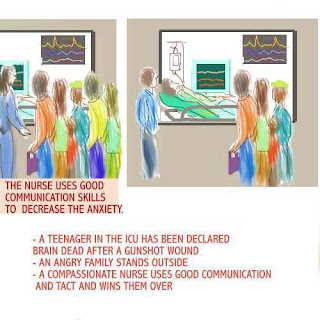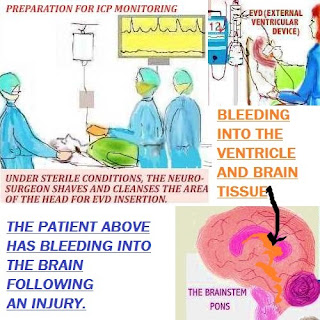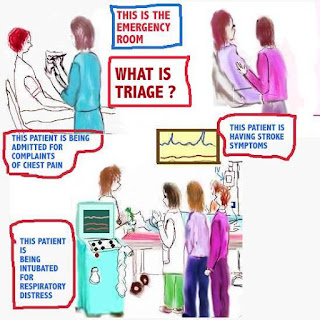EMERGENCY SITUATION FOR NURSES
 Updated 5/25
Updated 5/25there are countless ways that an emergency
may occur. A patient who has a car accident
may be admitted for a pneumothorax, or a
patient may be admitted for a heart attack,
stroke and more.
the situation of a new nurse.
She is assigned to the ER and is really
scared. She does not know how to get organized.
** A word of caution. Nursing is a wonderful
profession. Taking care of the sick and helping
them to get well, is a great accomplishment.
Perfecting good clinical judgement and
performance, cannot be accomplished
by high scores only.
declared brain dead after a gunshot wound.
An angry family stands outside.
to decrease the anxiety the family is feeling.
A compassionate nurse uses good communication
and tact to win them over.

























 IV
IV 















